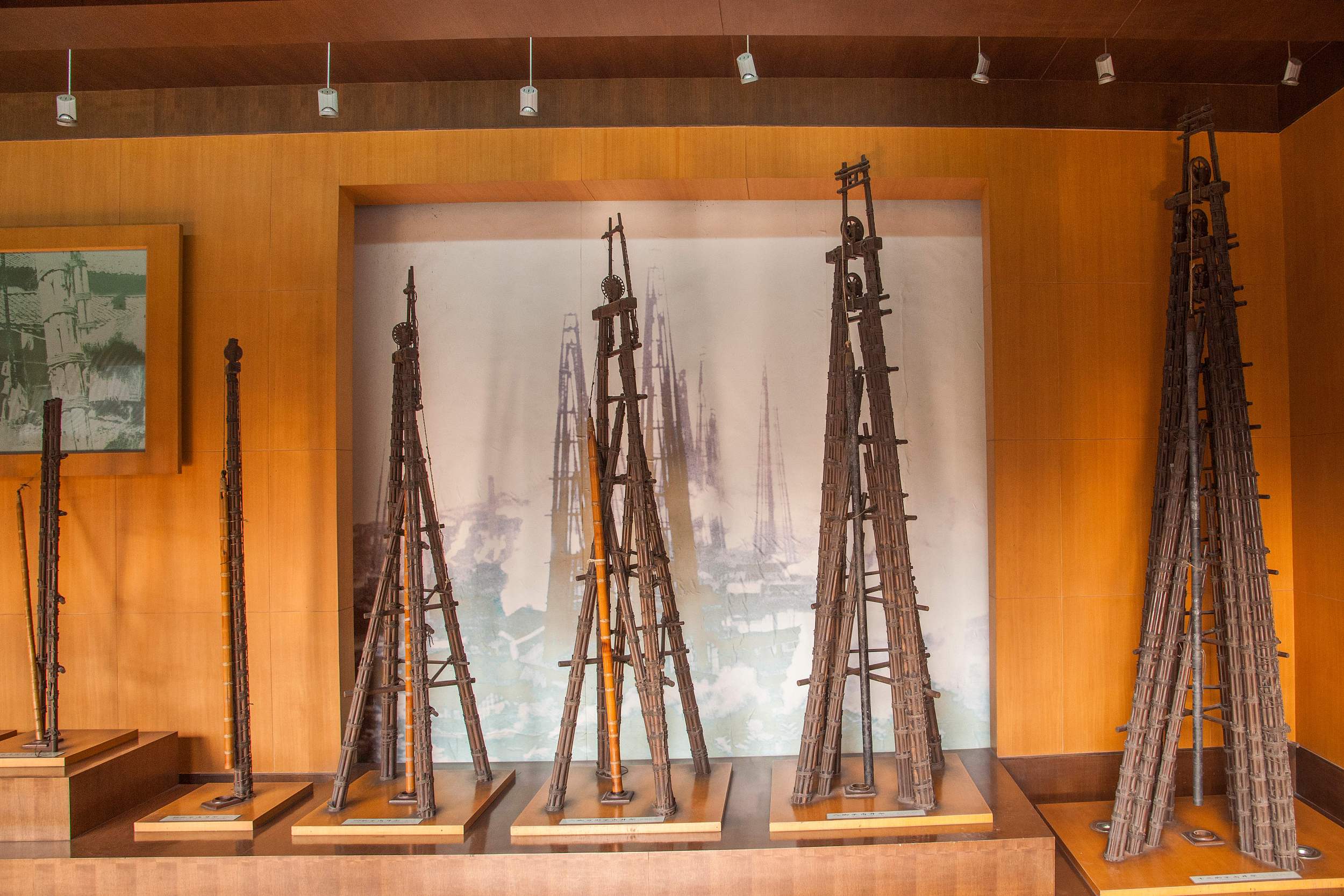Percussion Drill: A Revolution in Salt Mining

A relatively complete set of ancient percussion drill tools are on display at the Zigong Salt History Museum, Zigong, Sichuan province. (PHOTO: VCG)
By?BI?Weizi
The percussion drill, a large type of rotary drill with an impact mechanism that produces a hammering motion, was invented by Chinese during the Eastern Han Dynasty.
Its invention is closely related to the mining of well salt. About 5,000 years ago, people in coastal China produced salt by boiling seawater. As high-density human settlements moved inland and became increasingly dependent on agriculture, salt --essential to human survival as an important food supplement and preservative --became a valuable commodity. With government funding and the profits of the salt industry, mining technologies improved over time.
About 2,000 years ago, instead of digging water wells by hand with shovels, people began to use percussion drilling systems. By the beginning of the third century, wells had been drilled to a depth of 140 meters. Using the lever principle, a few men stand on a plank lever that lifts the drill pipe about one meter. The drill pipe is lowered and the drill bit is driven into the rock, breaking it up. Centimeter by centimeter, the drilling progresses slowly.
In the third year of Daoguang (1835) in the Qing dynasty, a 1,001.42-meter deep well was drilled in Zigong, the "Salt Capital," which was the deepest drilled well in the world at that time. The technical advantages of deep percussion drilling not only promoted the formation of resources and industrial advantages in Sichuan, Yunnan and other places, but also directly expanded people's understanding and utilization of salt resources in other parts of the world. This technology then spread to the West, and was later combined with the steam engine for mineral exploration worldwide in the 19th century.






